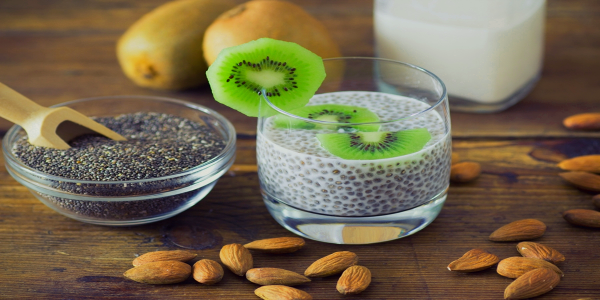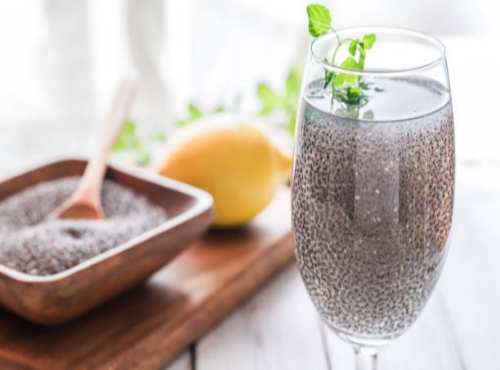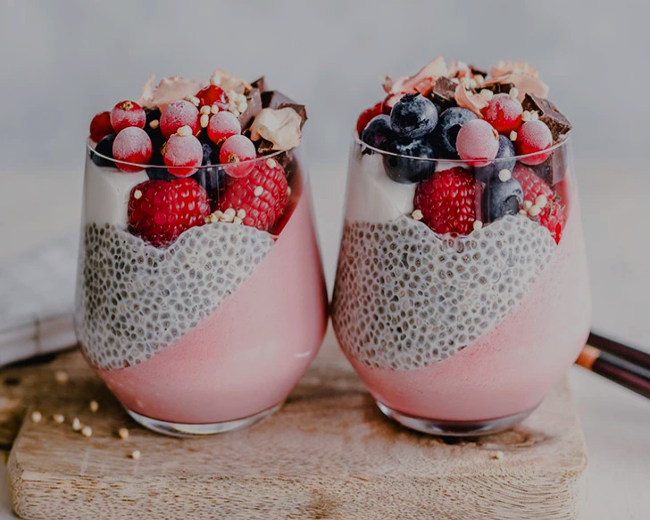Top 6 benefits of chia seed
The edible seeds of a flowering plant belonging to the mint family are known as chia seeds (Salvia hispanica), also known as Salba chia or Mexican chia. The seeds have a lengthy history and are indigenous to Mexico and Guatemala. They were an essential crop to the ancient Mesoamerican and Aztec cultures. The seeds were a significant component of the diets of the people and had medical uses in top 6 benefits of chia seed.
Commercial chia farming is now practised in a number of nations, including Mexico, Guatemala, Peru, Argentina, Australia, and the United States. The seeds are well-known for being a nutrient-dense complement to balanced meals.
Difference between chia seed and flaxseed
Chia seeds
are tiny, oblong seeds that come from the Salvia hispanica plant, also known as the chia plant. They can be purchased whole, go by the name of salba seeds, and come in black and white colours.
Chia seeds were probably a major meal in the ancient Aztec and Mayan diets because they are native to Mexico and Guatemala.

flaxseed
Compared to chia seeds, flax seeds are a little flatter and larger. They are also known as linseeds, are typically brown or golden in colour, can be purchased whole or ground, and are believed to have its origins in the Middle East.
Compared to flax seeds, which have a somewhat nuttier flavour, chia seeds have a fairly bland flavour. However, both kinds of seeds are simple to include in a wide range of foods.

Nutrient constituents
The following nutrients are responsible for the advantages of chia seeds:
- Omega-3 fats, a type of healthful fat that most Americans don’t consume enough of, are particularly helpful for heart health.
- Antioxidants are a key component of a diet that reduces inflammation.
- Chia seeds are a great source of fibre, which is crucial because fibre has so many health advantages, according to Beaver, with roughly five grammes per tablespoon.
Chia seed water can aid in preventing hunger because fibre can make you feel satisfied for a longer period of time. It’s less apparent, though, if this results in actual weight loss.
Chia seeds can aid in promoting bowel movement since they are rich in insoluble fibre, which keeps your stool soft while also helping to bulk it up.
Chia seeds offer a variety of necessary nutrients, such as:
- Calcium
- Manganese
- Magnesium
- Selenium
- Copper
- Iron
- Phosphorus
- Vitamin B3(niacin)
- Vitamin B1(thiamine)
Alpha-linoleic acid (ALA), an omega-3 fatty acid that supports a lower omega-6 to omega-3 fatty acid ratio and lowers the risk of chronic diseases like heart disease, cancer, and inflammatory illnesses, is also abundant in chia seeds.
Top 6 Health Advantages of Chia seed
Powerful antioxidants, vitamins, and minerals can all be found in abundance in chia seeds. These antioxidants include, among others:
- Espresso acid
- Acid chlorogenic
- Kaempferol\sQuercetin
These vitamins and minerals contribute to numerous important health advantages.
1.decrease of free radicals
Chia seeds include antioxidants that can aid in your body’s battle against free radicals. Cell damage and oxidative stress are results of free radicals. By consuming foods high in antioxidants, you may be able to lower your chance of acquiring a variety of conditions brought on by free radicals, such as heart disease, dementia, and some cancers.
2.Improved Heart Health
Quercetin, an antioxidant found in chia seeds, can lower your chance of acquiring a number of illnesses, including heart disease. The seeds also include a lot of fibre, which can decrease blood pressure.Chia seeds and other sources of soluble fibre can help reduce blood levels of total and LDL (bad) cholesterol. This can thus lower your chances of heart diseasesmore study here.
3.decreasing Blood Sugar Levels
Chia seeds provide a lot of fibre. According to studies, fibre may help to lower insulin resistance and improve blood sugar levels, which lowers your chance of developing metabolic syndrome and type 2 diabetes. Additionally, chia-seed bread causes a lower blood sugar response than conventional bread, according to research, lowering the risk of high blood sugar levels.
4.Less inflammation
Health problems including heart disease and cancer can be brought on by chronic inflammation. Chia seeds include the antioxidant caffeic acid, which can aid in the body’s defence against inflammation. Regular use of chia seeds may also assist to lower inflammatory indicators, which frequently point to the presence of an inflammatory condition.
5.healthier weight loss
39% of your daily required fibre intake is in a 1-ounce portion of chia seeds. As a result of the soluble fibre in the seeds absorbing water, after you consume them, you will feel more satisfied since the seeds will expand in your stomach. Chia seeds can aid in weight maintenance by making you feel fuller even when you eat less.
6.increased bone health
Magnesium and phosphorus, among other elements, are included in chia seeds and are essential for bone health. Calcium, which is essential for strong bones, muscles, and neurological function, is also present in a single ounce of the seeds, making about 18% of your necessary daily intake. Chia seeds outweigh dairy products gramme for gramme in calcium content.
Three things to consider before consuming chia seed in water

Beaver is a firm believer in using chia seeds in your diet because of their health advantages.However, she has some advice if you’re doing it by consuming chia seed water.
1.Use only 1 tablespoon of chia seeds to begin.
Beaver advises beginning with only one tablespoon of these seeds, even though several chia seed water recipes call for two (or more) tablespoons.
Because chia seeds are so fibrous, Beaver advises boosting your intake gradually. “Adding too much to your diet too quickly can result in digestive problems like bloating, gas, and constipation.”
2. To maximise its benefits
consume it after a meal
Despite the fact that chia seeds are loaded with nutrients, Beaver still advises drinking chia seed water with meals.
According to Beaver, “Viscous fibres offer the maximum benefit when we take them with food.” “When we eat these fibres as part of a bigger meal, the trapping activity of these fibres is most effective.”
3.Avoid letting the chia seed water stand.
Beaver’s main concern with chia seed water is that the seeds could sprout if they are submerged in water for an extended period of time, posing a threat to food safety.
Chia seed recipes often require for considerable soaking time, but Beaver advises that the mixture be consumed within two hours or chilled.
Chia seed pudding
Making Chia Pudding
A Recipe (3 Steps)
- Chia pudding is so simple to make! In a bowl or mason jar, whisk the chia seeds and milk together first. To 1 cup of liquid, I typically add 3–4 Tablespoons of chia seeds.
- Once the chia pudding mixture is thoroughly blended, give it a five-minute rest, give it one more toss or shake to break up any chia seed clumps, cover the dish, and place it in the refrigerator to “set” for one to two hours or overnight.
- The chia pudding needs to be solid, not liquid. Simply add extra chia seeds (between 1 teaspoon and 1 tablespoon), stir, and chill for a further 30 minutes or so if necessary.




